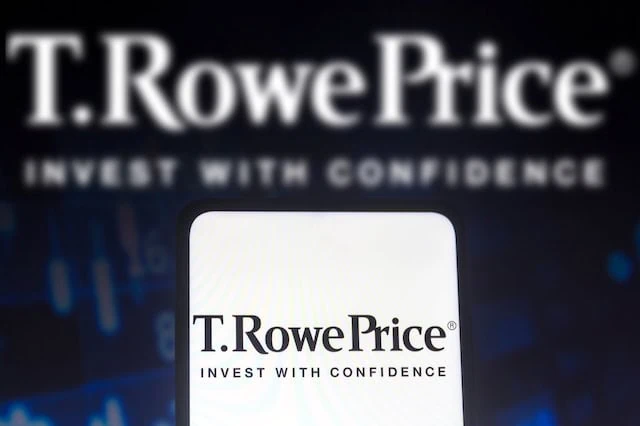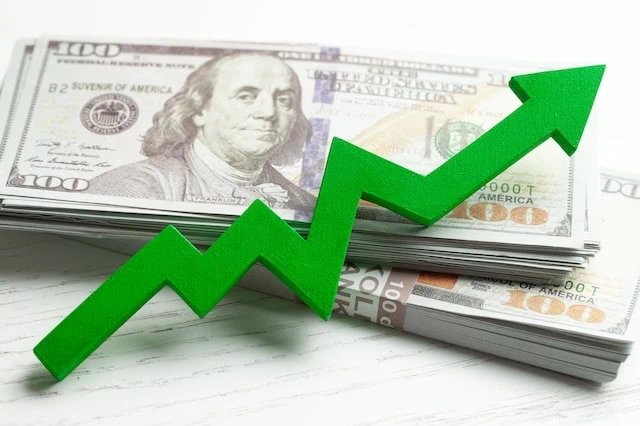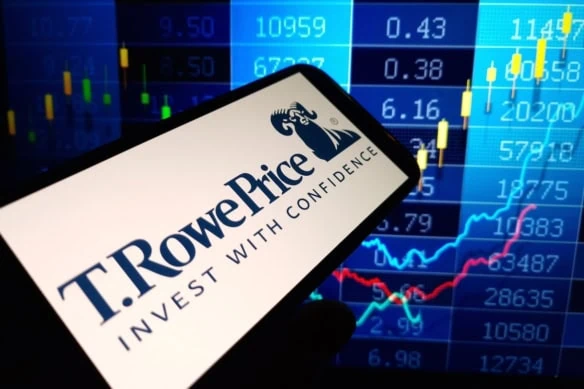T. Rowe Price has spent nearly 90 years building a reputation as a stalwart in wealth management and investment products. That work has been rewarded with $1.5 trillion in investor assets—much of which rests in the firm’s skillfully managed funds.
The keyword there is “managed.”
T. Rowe Price stands apart from many of its competitors because of its continued commitment and dedication to a human-centric approach to investing. While fund firms like Vanguard and BlackRock have aggressively built up product lineups controlled by rules-based indexes, the vast majority of T. Rowe Price’s offerings continue to offer portfolios hand-picked by human managers and analysis teams—just like they have been for decades.
If you’re not sure where to get started, though, I’m here to help. Read on as I explore some of the best T. Rowe Price mutual funds—a short list of core holdings that stand out for their strategic excellence and sound managerial judgment.
Disclaimer: This article does not constitute individualized investment advice. These securities appear for your consideration and not as personalized investment recommendations. Act at your own discretion.
Featured Financial Products
Why T. Rowe Price?

Thomas Rowe Price, Jr., founded his namesake company in 1937 as a wealth management firm. The firm launched its first mutual fund in 1950—74 years later, the company had exploded into a financial giant commanding more than $1 trillion in assets, boasting more than 7,000 associates worldwide, and offering more than 150 funds here in the U.S. alone.
That growth has come largely on the back of stellar managers—stars like former T. Rowe Price Health Sciences head Kris Jenner and current T. Rowe Price Capital Appreciation Manager David Giroux. But it’s also worth noting that while T. Rowe isn’t really known for skinflint fees, its expenses tend to be quite competitive, helping to attract investor money, too.
A few stats that help tell the tale:
- More than 90% of its Investor-class funds have expense ratios below their Lipper averages.
- 70% of T. Rowe funds with a minimum five-year track record beat their Lipper average for the period.
- That number goes up to 75% when looking at funds with a 10-year track record.
In short, T. Rowe offers productive, cost-effective investment products across numerous core and satellite strategies. And it does so while keeping human managers front and center.
How Were the Best T. Rowe Price Funds Selected?

T. Rowe Price boasts more than 150 mutual funds across a number of strategies—stock, bond, allocation, target-date, and more. That’s many, many more than any one investor would ever need, but given their generally high overall quality, whittling it down to a few select choices isn’t exactly easy.
I’ve started with a quality screen, including only T. Rowe funds that have earned the top Morningstar Medalist rating of Gold. Whereas Morningstar’s Star ratings are based upon past performance data, Morningstar Medalist ratings are a forward-looking analytical view of a fund. Per Morningstar:
“For actively managed funds, the top three ratings of Gold, Silver, and Bronze all indicate that our analysts expect the rated investment vehicle to produce positive alpha relative to its Morningstar Category index over the long term, meaning a period of at least five years. For passive strategies, the same ratings indicate that we expect the fund to deliver alpha relative to its Morningstar Category index that is above the lesser of the category median or zero over the long term.”
A Medalist rating doesn’t mean Morningstar is necessarily bullish on the underlying asset class or categorization. It’s merely an expression of confidence in the fund compared to its peers.
Unlike some of the other big-name fund providers, T. Rowe Price hasn’t made a name for itself by pushing fees to the floor … but most of its funds still charge less than their peer averages. Still, I’ve limited the list to T. Rowe mutual funds with costs at least below their category average to ensure investors are getting a decent value.
From the remaining universe of several dozen funds, I selected a range of products that fit various core portfolio goals and have good-to-great track records. And that brings us to our list of the best T. Rowe Price funds you can buy.
Related: 13 Dividend Kings for Royally Resilient Income
The Best T. Rowe Price Mutual Funds to Buy
Below are seven great T. Rowe Price funds best suited as core portfolio holdings.
All of the T. Rowe Price funds listed here have a $2,500 minimum initial investment unless otherwise indicated (after that, additional purchase minimums are just $100) and are open to new investors. However, where available, I’ve listed their equivalent ETF, which can be bought for the price of one share—typically just $20 to $40. Also, if any of these T. Rowe Price funds are available in your 401(k), you can buy them with no investment minimum.
In no particular order …
1. T. Rowe Price U.S. Equity Research Fund

- Style: U.S. large-cap stock
- Assets under management: $13.2 billion
- Dividend yield: 1.0%
- Expense ratio: 0.45%, or $4.50 per year for every $1,000 invested
- Minimum initial investment: $2,500
If you look at most major fund providers, you’re likely to find an S&P 500 index fund among their best-rated products. That’s because they’re not only going to be cheaper than many other funds in their category (“large blend,” which means large-cap stocks with a balance of growth and value), but in many cases, they’ll outperform most of their peers. Topping the S&P 500 is difficult—so difficult that a majority of fund managers who use the S&P 500 as their performance benchmark have failed to outdo the index each year for the past decade-plus.
T. Rowe Price U.S. Equity Research Fund (PRCOX) doesn’t have that problem.
PRCOX managers Ann Holcomb, Jason Polumn, and Jason Nogueira are explicit about going after the S&P 500. Per the fund summary: “The strategy attempts to create a portfolio with similar characteristics to the Standard & Poor’s 500 Stock Index with the potential to provide excess returns relative to the Index.”
So while it’s not an S&P 500 tracker, U.S. Equity Research looks awfully close at first glance. All of its sector holdings are within 1 percentage point of the index. You won’t find much variance in top 10 holdings, either—names like Microsoft (MSFT), Nvidia (NVDA), and Apple (AAPL) show up at comparable weights across both PRCOX and the S&P 500.
One of the biggest differences is portfolio size—PRCOX has roughly 200 fewer stocks, which means many of its holdings can enjoy slightly larger concentrations than they do within the index. And that, perhaps, is where U.S. Equity Research has found its alpha. PRCOX has not only outperformed the S&P 500 across every meaningful medium- and long-term time frame, but it has also ranked in the top 10% of its category by performance over the trailing three-, five-, 10-, and 15-year periods.
Is it more expensive? Absolutely. The 0.45% annual net expense ratio is many times pricier than your basic S&P 500 fund. But it is below the average for comparable products, and it has managed to beat the index despite the handicap. That makes PRCOX one of the best T. Rowe funds you can buy.
You can enjoy a similar strategy with the T. Rowe Price U.S. Equity Research ETF (TSPA), which charges 0.34% annually.
Want to learn more about PRCOX? Check out the T. Rowe Price provider site.
Do you want to get serious about saving and planning for retirement? Sign up for Retire With Riley, Young and the Invested’s free retirement planning newsletter.
Related: The 10 Best Fidelity Funds to Buy
2. T. Rowe Price Dividend Growth Fund

- Style: U.S. large-cap dividend-growth stock
- Assets under management: $25.3 billion
- Dividend yield: 1.0%
- Expense ratio: 0.64%, or $6.40 per year for every $1,000 invested
- Minimum initial investment: $2,500
If you see a fund with “dividend” in its name and assume it’s trying to deliver a superior dividend yield, the odds say you’ll be right more often than you’ll be wrong. But that’s not the case with T. Rowe Price Dividend Growth Fund (PRDGX).
Indeed, it’s not even the point.
Dividend-growth funds typically aim to own companies that regularly improve their payouts over time. This accomplishes a couple of things. For one, while it might not score you high current yield, it can generate a higher “yield on cost” down the road. Yield on cost is what you’re actually earning based on the price at which you bought the stock. (Example: A $100 stock paying $1 in annual dividends yields 1%. But because you bought the stock at $50, your yield on cost is 2%.)
Also, dividend-growth companies tend to be high-quality companies. After all, you can’t sustainably increase how much cash you’re shelling out to shareholders if you’re unable to turn a profit—you need strong financials and excellent cash flows. So dividend growth is often considered a quality screen of sorts that ensures the fund owns a higher grade of company.
That’s what you get with PRDGX. “Manager Tom Huber focuses on financially healthy companies that can sustain above-average payout growth as he believes dividend growers offer outperformance with lower volatility,” says Morningstar Analyst Stephen Welch. The fund’s roughly 100-stock portfolio, which is almost entirely made up of U.S. stocks, is full of serial dividend raisers like Visa (V) and Chubb (CB).
Specifically, though, Huber is tasked with building a portfolio of companies “that have a strong track record of paying dividends or that are expected to increase their dividends over time.” I emphasized “or” because it’s … well, different. Many dividend-growth index funds are required, thanks to the rules that govern the index, to own companies that have improved their payouts without interruption for some set period of time. That’s not the case with T. Rowe Price Dividend Growth. Huber has full discretion here. For instance, General Electric*—a top-10 holding as of March 31, 2024, data—only raised its payout once over the past five years, from 1¢ per share to 8¢ in 2021.
If you want a consistent methodology, a dividend-growth index fund would probably be more your speed. However, you’d do pretty well just to let Huber cook. PRDGX has a long-term performance edge on the competition, and it has historically delivered better returns than many of the more popular (and cheaper) dividend-growth ETFs.
The actively managed T. Rowe Price Dividend Growth ETF (TDVG) offers similar exposure and charges 0.50% annually.
* On April 2, General Electric spun off GE Vernova (GEV). The remaining company, now known as GE Aerospace (GE), announced a couple days later that it would raise its payout by a massive 250% to 28¢ per share.
Want to learn more about PRDGX? Check out the T. Rowe Price provider site.
Featured Financial Products
Related: The 10 Best Vanguard Funds to Buy for the Everyday Investor
3. T. Rowe Price Communications & Technology Fund

- Style: Thematic (communication services and technology)
- Assets under management: $9.7 billion
- Dividend yield: 0.1%
- Expense ratio: 0.77%*, or $7.70 per year for every $1,000 invested
- Minimum initial investment: $2,500
The T. Rowe Price Communications & Technology Fund (PRMTX) seems like a pretty straightforward fund, both in its name and its stated mission of holding communication and technology companies.
However, unlike an index fund that would assuredly be restricted to those sectors only, PRMTX management has a bit more autonomy.
“Unlike some competing funds, this offering will own companies across sectors with tangential links to communications in sectors such as technology, consumer, and real estate,” says Morningstar Analyst Adam Sabban. “Since the inclusion of fast-growing tech and consumer stocks amplifies the fund’s volatility, manager Jim Stillwagon mixes in steadier companies that serve as enablers for the sector, such as cable companies, data center REITs, and cell tower REITs.”
The resulting portfolio includes massive exposure to communication services (43%) and technology (38%), as you’d expect, but also a healthy 12% in consumer discretionary stocks, 5% in financials, and 2% in real estate. More than half of assets are concentrated into the top 10 holdings, which includes high-conviction plays in Facebook parent Meta Platforms (META), Netflix (NFLX), Google parent Alphabet (GOOGL), and Microsoft (MSFT), among others—all stocks you’d expect to see in a fund like this.
You have to take PRMTX’s performance comparisons with a grain of salt, given both the fund’s composition (this is diversified across numerous sectors while the benchmark is strictly a communication services index) and the fact that the communications sector had a massive overhaul in 2018 that added a number of companies previously in the tech sector. Still, T. Rowe Price Communications & Technology Fund has sat within the top 1% of its category over the trailing 10- and 15-year periods. Its performance hasn’t been as overwhelmingly dominant in shorter time periods, PRMTX still has comfortably beat its peers in the trailing three- and five-year time frames.
* Includes 0.05% fee waiver until at least April 30, 2025.
Want to learn more about PRMTX? Check out the T. Rowe Price provider site.
Related: The 7 Best Schwab Funds to Buy
4. T. Rowe Price Global Stock Fund

- Style: Global large-cap growth stock
- Assets under management: $6.8 billion
- Dividend yield: 0.2%
- Expense ratio: 0.81%, or $8.10 per year for every $1,000 invested
- Minimum initial investment: $2,500
The U.S. has been one of the world’s most fruitful stock markets for decades. So if you believe in the American economy’s ability to keep growing, naturally, you should continue to invest the lion’s share of your money in U.S. assets.
Still, many advisors will tell you it’s important to diversify geographically, too—a little hedging of bets, sure, but also, there are hundreds of high-achieving companies scattered across the globe, and it makes sense to have a little exposure to those firms, too.
You can get the best of both worlds with the T. Rowe Price Global Stock Fund (PRGSX).
An important note about fund terminology. The word “international” in a fund’s name implies its holdings come from anywhere but America. However, the word “global” implies that the fund holds both U.S. and international stocks. PRGSX is the latter, offering a roughly 65% domestic/35% foreign split.
Manager David Eiswert and his team of global analysts home in on companies capable of generating above-average earnings growth over time. “Eiswert filters the global equity universe through his investment framework, which emphasizes investing in quality companies at a time when fundamentals are poised to inflect higher, but without paying too much,” says Morningstar Analyst Adam Sabban. Currently, Global Stock’s team has locked in on about 90 holdings—overwhelmingly large-cap in nature, and with a clear bent toward growth stocks.
The international portion of the portfolio is most heavily tilted toward Japan, which still only commands less than 6% of assets. Canada, Germany, the Netherlands, and the U.K. all sit around 3% each. The top 10 holdings are thick in U.S. stocks, but London Stock Exchange Group (LNSTY) and Taiwan Semiconductor (TSM) make the cut.
Even at its worst, PRGSX still sits around the category average. But when it shines—which it does over most medium- and long-term time frames—it’s not just one of the best T. Rowe Price mutual funds you can buy, but one of the best funds period.
Want to learn more about PRGSX? Check out the T. Rowe Price provider site.
Do you want to get serious about saving and planning for retirement? Sign up for Retire With Riley, Young and the Invested’s free retirement planning newsletter.
Related: The 9 Best Fidelity Index Funds to Buy
5. T. Rowe Price QM U.S. Bond Index Fund

- Style: Intermediate-term core bond
- Assets under management: $1.6 billion
- SEC yield: 4.3%*
- Expense ratio: 0.25%, or $2.50 per year for every $1,000 invested
- Minimum initial investment: $2,500
T. Rowe Price clearly favors active management, but the T. Rowe Price QM U.S. Bond Index Fund (PBDIX) shows why you shouldn’t sleep on its index funds, either.
Most investors will want some exposure to bonds—debt issued by governments, companies, and other entities that pay interest to bondholders. But how much will largely depend on your age.
Bonds tend to be much less volatile than stocks, for better or worse; it limits downside, yes, but it also limits upside. Instead, most of the return from bonds comes from the steady stream of interest income they produce. They’re not great for generating wealth, which is your prime concern when you’re younger, but they’re outstanding for protecting wealth, which becomes increasingly pivotal as you age.
But it’s tough to go out and buy, say, a single bond. Data and research on individual issues is much thinner than it is for publicly traded stocks, plus, some bonds have minimum investments in the tens of thousands of dollars. So, your best (and most economical) bet is to buy a bond fund, which can provide you with access to hundreds if not thousands of bonds.
PBDIX is a core bond fund that helps you knock out most of your most basic bond needs in one place. About 30% of the fund’s 1,200-plus debt issues are U.S. Treasuries. Another 30% are corporate bonds. The biggest chunk, at around 35%, is wrapped up in securitized mortgages. The rest is sprinkled across municipal bonds, junk debt, and other issues. All but a tiny bit of PBDIX’s holdings enjoy investment-grade ratings; two-thirds are rated AAA, the highest possible tier. There’s some interest-rate risk—55% of the portfolio is in bonds with maturities of five years or longer. An average duration of 6.2 years implies that a 1-percentage-point hike in interest rates would send PBDIX 6.2% lower, and vice versa.
Performance figures, while not stellar, are typically better than average, and costs are quite low compared to both comparable competitors and most T. Rowe Price bond funds.
You can also get this strategy in ETF form, via the T. Rowe Price QM U.S. Bond ETF (TAGG), which charges an even lower 0.08%.
* SEC yield reflects the interest earned across the most recent 30-day period. This is a standard measure for funds holding bonds and preferred stocks.
Want to learn more about PBDIX? Check out the T. Rowe Price provider site.
Related: The 7 Best Schwab Index Funds to Buy
6. T. Rowe Price Retirement Blend Fund Series

- Style: Target-date
- Assets under management (collectively): $18.6 billion
- Expense ratios: 0.34% to 0.44%, or $3.40 to $4.40 per year for every $1,000 invested
- Minimum initial investment: $2,500
OK. I’m cheating a lot with this one. By recognizing the T. Rowe Price Retirement Blend Fund Series, I’m actually chucking not one, but 12 more entries into this list of best T. Rowe funds.
Still, the inclusion is well deserved.
Target-date funds shift their asset allocation over time to meet investors’ changing needs as they age. A person who’s, say, 25 in 2025 would expect to retire in 2065, so they’d buy a fund with a target retirement date of 2065. That fund would probably start out with a very heavy allocation to stocks (to grow the investors’ wealth), but as the years rolled on and the fund approached its target retirement date, it would start putting more of its assets into bonds (to protect the investors’ wealth).
A lot of mutual fund companies have at least one target-date series. Some of the bigger providers, like T. Rowe, have several. And while many target-date series are well-rated, it’s uncommon to find Gold Morningstar ratings on a series—but that’s exactly what T. Rowe Price Retirement Blend Funds have earned.
T. Rowe Price Retirement Blend Funds hold a mix of actively managed and indexed holdings, which helps cut down on cost. For instance, the fully actively managed T. Rowe Price Retirement Fund Series’ expense ratios range from 0.49% to 0.64%. But Retirement Blend ranges from 0.34% to 0.44%.
A quick look at the full lineup:
- T. Rowe Price Retirement Blend 2010 Fund (TBLQX)
- T. Rowe Price Retirement Blend 2015 Fund (TBLSX)
- T. Rowe Price Retirement Blend 2020 Fund (TSBAX)
- T. Rowe Price Retirement Blend 2025 Fund (TBLVX)
- T. Rowe Price Retirement Blend 2030 Fund (TBLWX)
- T. Rowe Price Retirement Blend 2035 Fund (TBLYX)
- T. Rowe Price Retirement Blend 2040 Fund (TRBLX)
- T. Rowe Price Retirement Blend 2045 Fund (TRBQX)
- T. Rowe Price Retirement Blend 2050 Fund (TRBSX)
- T. Rowe Price Retirement Blend 2055 Fund (TRBOX)
- T. Rowe Price Retirement Blend 2060 Fund (TRBNX)
- T. Rowe Price Retirement Blend 2065 Fund (TRBPX)
In short, you get the best of both worlds—access to T. Rowe’s skilled fund managers and some exposure to less expensive products, resulting in an affordable but still productive line of retirement funds.
Featured Financial Products
Related: 9 Monthly Dividend Stocks for Frequent, Regular Income
7. T. Rowe Price Capital Appreciation

- Style: Aggressive allocation
- Assets under management: $65.1 billion
- Dividend yield: 1.9%
- Expense ratio: 0.72%, or $7.20 per year for every $1,000 invested
- Minimum initial investment: $2,500
T. Rowe Price Capital Appreciation (PRWCX) comes at the tail end of this list—very much out of order—because of its status. Specifically, PRWCX is closed to most new investors. This is very much an exception to the rules I laid out above. However, I’m still including it among the best mutual funds you can buy both because of its extremely high quality and because this T. Rowe fund still might be available to some investors via select registered investment advisory (RIA) firms.
T. Rowe Price Capital Appreciation is a type of fund that goes by several names—an “asset allocation fund,” the shorter “allocation fund,” or a “balanced fund.” But all of that means the same thing: It holds stocks and bonds.
PRWCX is designed to invest at least half its assets in stocks, with the rest socked into various debt securities, including corporate bonds, government debt (Treasuries, MBSes, asset-backed securities), and bank loans. It’s primarily a domestic fund, but it can hold at least a quarter of its assets in foreign equities and debt. PRWCX, which currently holds around 330 securities, places 60% of assets in domestic shares, a little more than 30% in domestic bonds, 5% in cash, and is peppering the rest across foreign stock, foreign bonds, and other investments.
Morningstar Analyst Jason Kephart calls David Giroux, who has managed the fund since June 2006, “a five-star manager that hasn’t begun to peak.”
“He’s displayed an innate ability to opportunistically invest across both equities and bonds, capturing pockets of value through strong stock selection and impressively timed shifts between stock and bond exposure,” Kephart says. “His execution of this strategy’s nimble, contrarian approach has delivered topnotch returns for its investors.”
Indeed, Giroux has beaten all his category peers in the trailing 15- and 10-year periods, and he’s beaten 98% of peers over the trailing five- and three-year periods. And PRWCX offers that outperformance at a not-cheap but still-moderate cost.
T. Rowe Price Capital Appreciation’s only sticking point is a critical one—availability. It’s largely closed, so most of us can’t just log into our browsers and buy this fund. But again, if your money is managed through certain RIAs, you might actually be able to buy shares of this gem … and if you find you can, you should.
Want to learn more about PRWCX? Check out the T. Rowe Price provider site.







